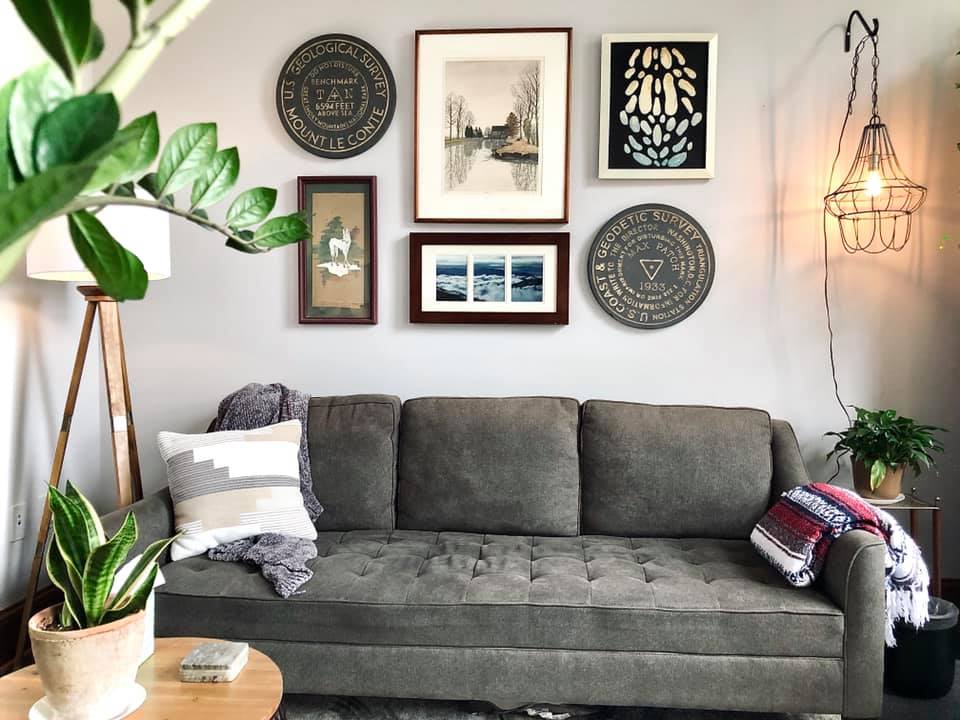CREATING A CRUCIBLE FOR TRANSFORMATION.
By way of introduction, this is the title of the training manual for the AAIT Fellowship Training Group. Participants lovingly refer to it as the Big A$% Notebook. As you might guess, it’s chock full of resources and information to ensure that my students’ clients get the same reliable benefits that my clients get.
Our offices are also crucibles for transformation. We intentionally create spaces that will allow for ease of being. We make sure our clients have water (or tea ![]() . We check the tissue box and lighting. We put white noise machines on when needed to protect confidentiality. We create crucibles for transformation.
. We check the tissue box and lighting. We put white noise machines on when needed to protect confidentiality. We create crucibles for transformation.
With tele-health, some clients report they will wait until the offices are open again. They just don’t want to do the tele-health option, they want to be in our offices in person. Many are concerned that the work won’t be as ‘deep.’ By the way, AAIT practitioners who have switched to tele-health continue to get the same reliable results they do face to face. The work is still as deep and transformational.
Still, the crucibles of our office are a stark comparison to some of the spaces our clients are in when they connect with us….bathrooms, closets, even cars. Finding privacy and carving out space for therapy at home is a real challenge. Couple that with technical challenges and, well, it’s just easier to drop out.
Y’all, we’ve come too far to so readily dismiss the value of therapy because our therapeutic settings are now more challenging. I have had one client say they will wait until I’m welcoming people back into my office and calls from three people eager to take his place.
Our skills are needed now more than ever. Now it’s incumbent upon us to not only have banging therapeutic skills but also support our clients in stepping up to create their own crucibles for transformation. AND that doing this is GOOD for them. Creating spaces in our own homes that feel quiet, contained, and caring is a form of self-care when self-care is sorely needed.
✔️ Neutralize your own tension about this new work scene. Otherwise, the threads of your charged energy will inhibit you from gently pushing back and supporting clients who long for the days of in person care and put their own mental health and wellbeing on hold until such time arises. End of words can really help with this. (www.tinyurl.com/aaiteow)
✔️ Schedule ten or fifteen minutes with your clients to walk them through the technical bits of tele-care. This would include setting the camera angle, making sure their face is lit, how to make their self-image on the screen go away. Answering any technical questions they have, including what the plan B is if there is a technical problem or they have sketchy internet service. This may include shutting off the screen and talking on the phone for a little bit. Make sure to make room to answer their questions and address their technical concerns. It’s very difficult to open up emotionally and then deal with screen freezing and choppy connection.
✔️ Discuss together where in their home they feel most secure and private. Where is the best place for them to be while you are meeting? What can they do to make the space more intentional? Again, this is a form of self-care and it’s good for most of us to consider our environment in this way. Do they have tissue? Water? What do they need to do to garner the support of those with whom they share space?
✔️ Discuss the value of white noise apps or machines to access more privacy. Walk them through how they can use them when they are in session (IF they are not using the phone for the session). Discuss what else they might need so they feel secure in the privacy aspect of your shared time.
✔️ Use the here and now. When tech fails, when it seems they are frustrated with the format, discuss it. Use the here and now as Irving Yalom would guide us. From time to time check in about the tech set up and what they are discovering about working together in this way. Include space for any requests they may have that could make this time in this environment more amenable for their transformation.
What tips do you have about supporting our clients as they adjust to this new norm while longing for the good ole days?
If you are curious about getting the same results with tele-care that you facilitated in face to face care. Message me, AAIT may be the next best step for you.
I thought you might enjoy a pic of the Big A$% Notebook, but not nearly as much as the pic of Logan Mahan’s intentional space.



